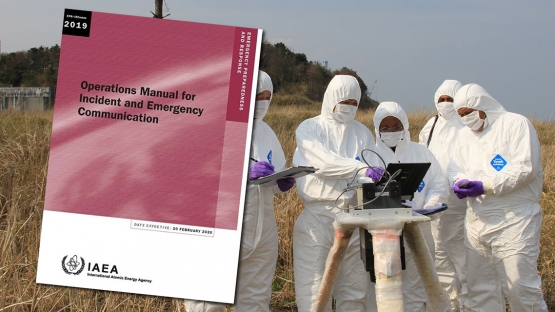In case of a nuclear or radiological emergency, what do national authorities need to do to respond and how quickly? How do they communicate with other countries’ emergency responders and the IAEA when every second counts? A new and updated Operations Manual provides the answers to these and other questions that arise in emergency response.
The Operations Manual for Incident and Emergency Communication describes in detail the steps that authorities and international organizations need to take to notify other countries and the IAEA of an event and how to request help during a nuclear or radiological emergency. Information in the manual applies to all countries and relevant international organizations and is of particular importance to those that have signed the Convention on Early Notification of a Nuclear Accident (‘Early Notification Convention’) and the Convention on Assistance in the Case of a Nuclear Accident or Radiological Emergency (‘Assistance Convention’), which represent approximately three quarters of the IAEA’s 171 Member States.
“Several developments have led to modifying existing arrangements since the last edition of the Operations Manual was issued in 2012,” said Kilian Smith, Response and Assistance Network Officer at the IAEA’s Incident and Emergency Centre. “This includes changes due to the lessons identified in exchanging information during incidents, emergencies and exercises, and updates to the Unified System for Information Exchange in Incidents and Emergencies (USIE).”




